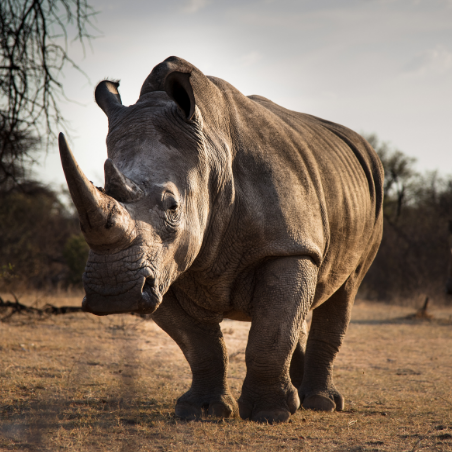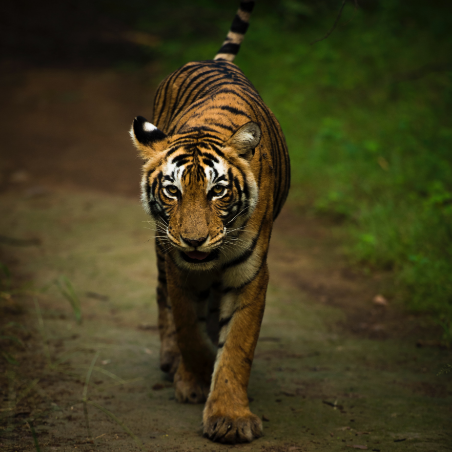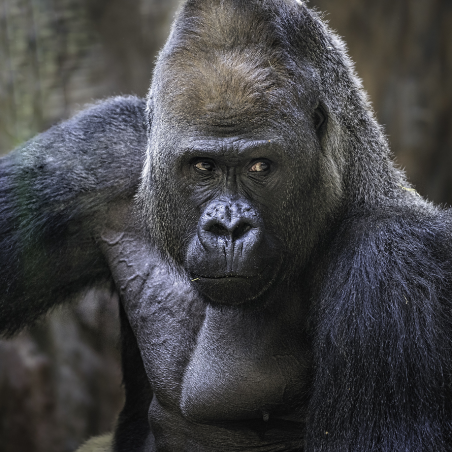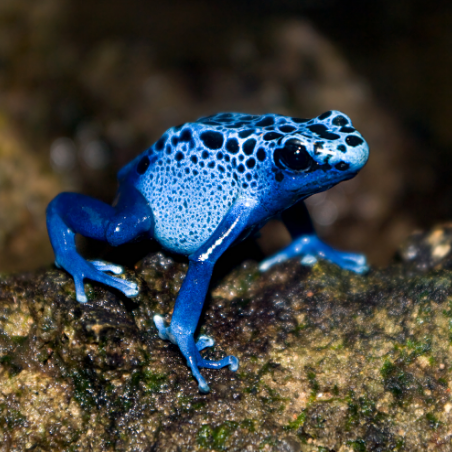By highlighting threatened or endangered species, SeqOnce hopes to draw attention to conservation efforts. As biologists, we believe humanity is better served when ecologies are maintained and there is diversity of life.
The rhinoceros is a magnificent animal, but three of the five species are critically endangered: Javan rhino, Sumatran rhino, and the Greater One-Horned rhino.
These rhinos are threatened by poaching and habitat loss. We can help through efforts such as Sumatran Rhino Rescue. The White rhino was nearing extinction, yet has been brought back from the brink through extensive conservation.
These frogs are native to rainforests of South and Central America. About a quarter of the more than 200 species are listed as threatened or critically endangered the blue poison dart frog is one of these. The primary threat to poison dart frogs is the loss of habitat due to logging and clearing of the rainforest.
The majestic and powerful African lion has no natural enemies, but due to loss of living space and conflict with people the number of lions has been greatly reduced. There are half as many lions than there were 25 years ago. A surprising fact is that there are more rhinoceros than lions. There are only about 23,000 lions left in the wild and they are extinct in 26 countries across Africa, and has consequently been listed as vulnerable to extinction.
The world’s number one most endangered animal in 2022 is the amur leopard. They are solitary animals, nimble-footed and strong. It is estimated that there are only 84 individuals left in their natural habitat in the Russian Far East. Their main threat is poaching both for their coats and bones. Bones are sold for use in traditional Asian medicine. In addition they are at risk of habitat loss due to deforestation and fires.
Elephants are the largest mammals in the world and the females and calves live in complex social structures. Male elephants live in smaller groups. Some populations of African elephants are increasing, however numbers are continuing to fall in other areas. Certain populations are poached towards extinction due to illegal ivory trade, and the African elephant is listed as vulnerable. Asian elephant numbers are continuing to decline rapidly and the Asian elephant is listed as endangered where the Sumatran elephant is critically endangered due to habitat loss.
The Malay word orangutan means “person of the forest.” These great apes are more solitary than other apes, and spend most of their time in trees of their tropical rain forest home. They use large leaves as umbrellas to protect themselves from rain. Because orangutans are so dependent on trees, deforestation in addition to hunting have placed them in danger of extinction.
If you’d like to help, please click on one of these links to conservation groups or to learn more about how you can support:
https://www.worldwildlife.org/species/poison-dart-frog
https://africageographic.com/stories/elephant-charities-the-good-the-bad-the-ugly/
https://borneoorangutansurvival.org/



